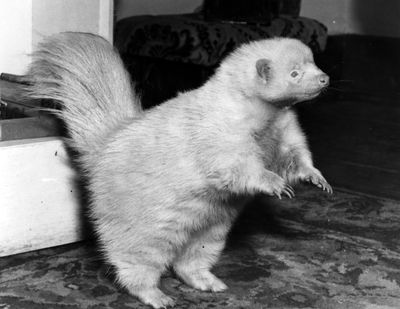Wildlife lovers use ears, eyes

The first wildlife signs of spring aren’t just sights for winter-sore eyes. They’re comforting to the ears, too.
Tina Wynecoop, who lives just north of Spokane, has been reveling in the late-winter return of wildlife sounds, such as frogs beginning to sing in the wetlands.
In a stroke of rural genius, she’s been employing the baby monitor she’s had for visits from her grandkids. The monitor brings the early-morning sounds of nature into the house even when outside temperatures are too cold for leaving the windows open.
“It is easy to hang the two monitors out different windows and then close and lock the windows carefully on the cords,” she said. “The indoor speaker relays what is going on outside.”
This might not be the best idea in the city, especially on garbage collection day, but outside of town, it delivers delight to the family room.
“I get to hear who is first to sing,” Wynecoop said this week. “This morning a northern pygmy owl was tooting, then a song sparrow, followed by robins, geese, towhee, killdeer, Western bluebirds, red squirrels, wild turkeys, and so on.
“The house stays warm, and my ‘ears’ get to experience the glory of the morning.”
Harbinger of spring runs: Recent avian returnees to Wynecoop’s yard include the mourning dove.
“I heard it calling for the first time last week,” she said, adding a bit of history from her Native American ties.
“Before dams were built on the Columbia, Indians of the Interior Plateau would head to Brewster for the spring salmon run. The dove’s call was a signal the salmon were on their way.”
Nose for wildlife: “I walked to work this morning and coming down the Monroe Street hill between Sixth and Fifth, saw a white skunk cross Monroe, heading to the rear of Shriners Children’s Hospital,” Shaun Higgins reported last week in an e-mail.
“At first I thought it was a cat, but it wasn’t actually moving like a cat. Then I got a good look at its tail. Skunk!”
Although the critter disappeared, he walked to its path and confirmed the sighting with a few sniffs.
Tom foolery: Wild turkeys are making friends and foes in the Southeast Boulevard area of the South Hill.
The flock has grown to nearly two dozen. Some people enjoy seeing them and may be feeding them, while other are taking the brunt of their destruction and messy roosting.
One person has been given an archery kill permit by the Washington Department of Fish and Wildlife and another man has a permit to live-trap the birds to thin out the flock.
Luring the birds into the traps with food has been unproductive because the mild winter hasn’t left them susceptible to bait.
Fatal attraction: About 3,000 migrating tundra swans were counted in the lower Coeur d’Alene river chain lakes region last week by U.S. Fish and Wildlife Service surveyors.
Most of them are in the areas highly contaminated with heavy metals, said Kate Healy, a U.S. Fish and Wildlife Service biologist.
Unfortunately, that’s just about everywhere downstream from Kellogg. “About 95 percent of the 19,000 acres of wetlands along the lateral lakes are contaminated with lead,” she said.
About 200 tundra swans succumb to lead poisoning during this spring pit stop each year.
“In 2007, we had high water, the lakes were flooded and the swans couldn’ reach the tubers and vegetation on the lake bottoms so they moved on,” she said.
If the water is too low, they might move on for lack of resting area and predator protection.
But when conditions are right, they love to stop here and root their heads down into the bottom muck where they feast on lethal stew of roots, water potatoes and toxic metals.
A count of 6,000 swans was recorded one day last March when fields were flooded at perfect levels. This year’s counts are normal. The swans likely will peak this week and be departing around next weekend, she said.
•About 4,400 tundra swans were at Calispell Lake in Pend Oreille County Friday, and at least 80 great blue herons were at the Pend Oreille River bridge at Usk.
Bears emerging: Wildlife officials in Yellowstone and Glacier parks say bears have begun emerging from dens in the past 10 days. So they’re warning visitors to be bear aware.
They’re also asking park-area locals to stop feeding birds, since hungry bears fresh out of hibernation will be quickly attracted to bird seed as nature’s smorgasbord is still sparse from winter.